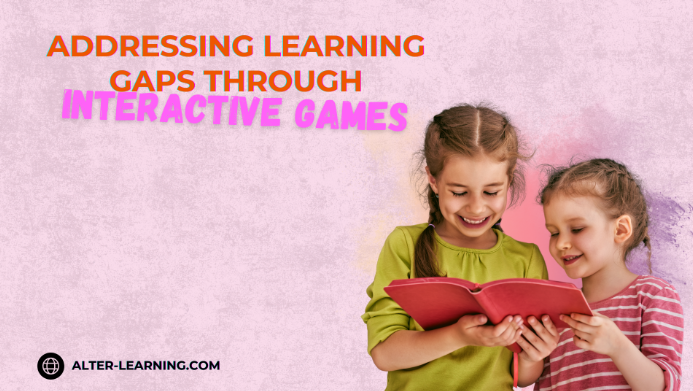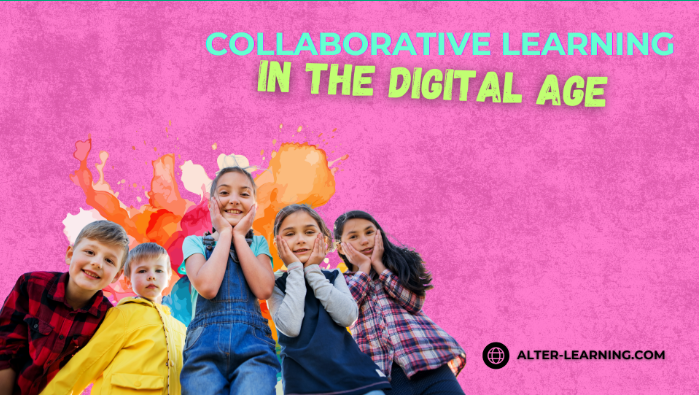Learning gaps are not new—but in the wake of disruptions like remote schooling, unequal access to resources, and varied learning styles, they’ve become more visible and more urgent. Teachers, administrators, and caregivers are increasingly seeking innovative ways to identify and address these gaps while keeping students motivated and engaged.
Interactive games can offer one potential pathway. When designed with intention, educational games may not only support core academic concepts but also adapt to different learning needs, provide meaningful feedback, and give students a chance to revisit and reinforce key skills without stigma or boredom.
Alter-Learning’s immersive platforms and game-based environments are designed to help bridge these gaps by turning challenges into opportunities for discovery, mastery, and growth.
Understanding Learning Gaps in the Modern Classroom
A learning gap typically refers to a discrepancy between what a student has learned and what they are expected to know at a given point in time. These gaps can result from various factors:
- Missed instruction due to illness or school changes,
- Language barriers or differing learning styles,
- Socioeconomic disparities that affect access to resources,
- Lack of engagement or confidence in traditional learning environments.
While traditional remediation methods can be effective, they often struggle to keep learners motivated—especially those who have already experienced setbacks. That’s where interactive learning can offer something different.
How Game-Based Learning Can Help
Interactive STEAM learning platforms like Alter-Learning can provide an alternative approach that is supportive, engaging, and personalized. Instead of isolating students based on what they haven’t learned, games can meet them where they are—and invite them to move forward at their own pace.
Here’s how interactive games can assist with addressing learning gaps:
1. Repetition Without Stigma
Games naturally incorporate repetition through challenges, retries, and level progression. Students are encouraged to try again without shame, building mastery through practice.
- Interactive VR simulations allow students to revisit difficult concepts in new contexts,
- Math puzzle games or science challenges present content as engaging tasks rather than worksheets,
- Visual and auditory feedback reinforces learning without requiring direct correction from an adult.
2. Personalized and Adaptive Learning Paths
Many of Alter-Learning’s tools are designed with flexibility in mind. Students can work at their own pace, skip ahead when ready, or spend extra time where needed.
- Features like differentiated levels and checkpoints allow teachers to assign based on skill, not age,
- Students can select different difficulty settings in some environments, helping to scaffold learning,
- Multiplayer features also allow for peer support and cooperative learning.
3. Connecting Content to Curiosity
Games rooted in immersive storytelling, exploration, or design can reawaken students’ natural curiosity—especially for those who may have disengaged from more traditional instruction.
- Science games for kids can tie abstract ideas to real-world scenarios,
- AR biology exploration or digital art creation tools offer hands-on, inquiry-based learning,
- Narrative-driven environments let students explore cause and effect in dynamic systems.
When students are curious, they are more likely to persist—and persistence is a key ingredient for closing gaps.
The Role of Educators in Game-Based Support
Games alone aren’t enough. Teachers play a crucial role in guiding students, interpreting feedback, and creating supportive learning environments.
Alter-Learning offers teacher dashboards, quiz integration, and flexible settings that allow educators to:
- Monitor progress across skills and identify where extra support may be needed,
- Assign specific game modules that target known gaps in knowledge,
- Offer game-based assessments to gauge understanding in a low-pressure setting.
By blending traditional instruction with game-based reinforcement, teachers can create a more holistic support strategy—without overwhelming their students.
Inclusive Design for Diverse Learners
Importantly, Alter-Learning’s platforms aim to make these tools accessible to as many students as possible, including:
- Multisensory feedback for students with learning differences,
- Colorblind-friendly design and audio cues for accessibility,
- Multiplayer and collaborative tasks to support social learning,
- Compatibility across different hardware levels for broader reach.
Accessibility isn’t just a technical feature—it’s part of closing learning gaps by ensuring all students can participate fully.
From Struggle to Success, One Game at a Time
Learning gaps don’t define a student’s potential. With the right tools, learners can rebuild their confidence, develop new strategies, and make meaningful progress. Interactive games—especially those designed with equity, flexibility, and curiosity in mind—can help turn that potential into progress.
Alter-Learning’s immersive educational tools offer more than just a new way to teach—they can help create new opportunities to catch up, dig deeper, and discover the joy in learning again.
Because sometimes the best way to fill a gap isn’t with more pressure—but with more play.
Follow Alter-Learning for more insights into immersive education, edtech success stories, and the future of learning. Want to explore how VR/AR could transform your school or learning platform? Let’s connect.




